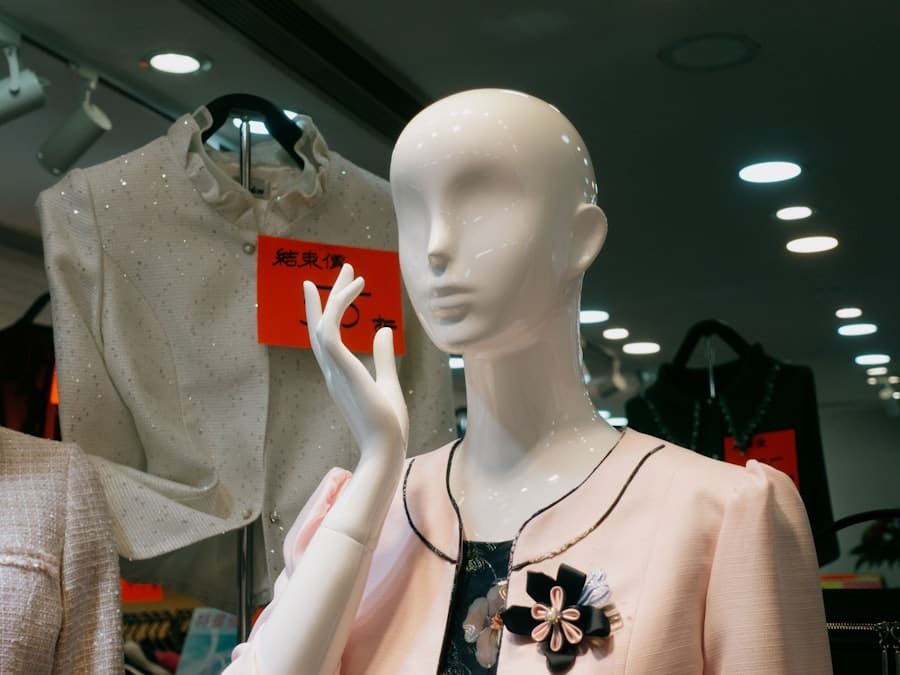The emergence of non-fungible tokens (NFTs) has revolutionized various industries, and the fashion sector is no exception. As digital assets that represent ownership of unique items, NFTs have found a significant foothold in virtual fashion markets, where they enable designers and brands to create, sell, and trade digital garments and accessories. This intersection of technology and creativity has opened up new avenues for expression, commerce, and community engagement within the fashion industry.
The allure of owning a one-of-a-kind digital piece, coupled with the growing acceptance of virtual environments, has led to a burgeoning market where fashion transcends physical limitations. In recent years, the rise of virtual worlds and online platforms has provided fertile ground for the integration of NFTs into fashion. Platforms like Decentraland and The Sandbox have become popular venues for showcasing digital fashion collections, allowing users to dress their avatars in exclusive pieces that can be bought, sold, or traded as NFTs.
This shift not only democratizes access to high-fashion items but also challenges traditional notions of ownership and value in the fashion industry. As consumers increasingly seek unique digital experiences, the potential for NFTs in virtual fashion markets continues to expand, prompting designers and brands to rethink their strategies and embrace this innovative technology.
Key Takeaways
- NFTs are revolutionizing virtual fashion markets by offering unique digital assets that can be bought, sold, and traded using blockchain technology.
- Understanding NFTs and blockchain technology is essential for virtual fashion designers to leverage the potential of this new market.
- NFTs are impacting the fashion industry by providing a new way for designers to showcase and sell their digital creations, while also offering collectors a way to own exclusive virtual fashion items.
- Virtual fashion designers have the potential to explore new revenue streams and creative opportunities by utilizing NFTs to sell their digital designs and collections.
- While NFTs offer exciting opportunities for virtual fashion markets, there are also challenges such as copyright issues, environmental concerns, and the need for clear legal and ethical guidelines.
Understanding the Concept of NFTs and Blockchain Technology
At the core of NFTs lies blockchain technology, a decentralized digital ledger that records transactions across multiple computers. Unlike cryptocurrencies such as Bitcoin or Ethereum, which are fungible and can be exchanged for one another, NFTs are unique digital assets that cannot be replicated or exchanged on a one-to-one basis. Each NFT contains distinct information that verifies its authenticity and ownership, making it an ideal medium for representing digital art, collectibles, and fashion items.
The most common blockchain for NFTs is Ethereum, which supports smart contracts—self-executing contracts with the terms of the agreement directly written into code. The uniqueness of NFTs is what sets them apart from traditional digital files. While anyone can download an image or a 3D model of a virtual garment, owning the NFT associated with that item grants the holder exclusive rights to it.
This ownership is verifiable on the blockchain, providing a level of security and provenance that is often lacking in the digital realm. For fashion designers, this means they can create limited-edition pieces that carry intrinsic value due to their scarcity and authenticity. The ability to trace the history of an NFT also adds an element of storytelling to each piece, enhancing its appeal to consumers who are increasingly interested in the narratives behind their purchases.
The Impact of NFTs on the Fashion Industry

The impact of NFTs on the fashion industry is multifaceted, influencing everything from design processes to marketing strategies. One significant change is the way designers approach creativity; with NFTs, they can experiment with digital-only collections that may not be feasible in the physical world. This freedom allows for innovative designs that push the boundaries of traditional fashion, incorporating elements like animation, interactivity, and augmented reality.
For instance, designers can create garments that change color or pattern based on user interaction or environmental factors, offering a dynamic experience that physical clothing cannot replicate. Moreover, NFTs have introduced new revenue streams for fashion brands. By selling digital garments as NFTs, designers can reach a global audience without the constraints of physical production and distribution.
This model not only reduces overhead costs but also allows for direct engagement with consumers through online marketplaces. Brands like Gucci and Prada have begun exploring this space by launching limited-edition NFT collections that cater to tech-savvy consumers who value exclusivity and innovation. The ability to resell these digital items on secondary markets further enhances their value proposition, creating a cycle of demand that benefits both creators and collectors.
Exploring the Potential of NFTs for Virtual Fashion Designers
For virtual fashion designers, NFTs represent a groundbreaking opportunity to establish their presence in an increasingly competitive landscape. These designers can leverage the unique characteristics of NFTs to build brand identity and cultivate a loyal following within virtual communities. By creating distinctive digital pieces that resonate with specific audiences—such as gamers or social media influencers—designers can carve out niche markets that were previously inaccessible in traditional fashion settings.
Additionally, NFTs enable virtual fashion designers to collaborate with other artists and brands in innovative ways. Cross-disciplinary partnerships can lead to unique collections that blend different styles and aesthetics, appealing to diverse consumer bases. For example, a virtual designer might collaborate with a well-known digital artist to create an NFT collection that combines fashion with visual art, resulting in pieces that are not only wearable but also collectible works of art.
This collaborative spirit fosters creativity and encourages experimentation, ultimately enriching the virtual fashion landscape.
Challenges and Opportunities in Using NFTs for Virtual Fashion Markets
While the potential for NFTs in virtual fashion markets is vast, several challenges must be addressed for widespread adoption. One significant hurdle is the environmental impact associated with blockchain technology, particularly proof-of-work systems like Ethereum. The energy consumption required for minting and trading NFTs has raised concerns among environmentally conscious consumers and activists alike.
Another challenge lies in the volatility of the NFT market itself. Prices for digital assets can fluctuate dramatically based on trends, speculation, and market sentiment.
This unpredictability can deter some designers from fully committing to NFT projects or lead to financial losses for those who invest heavily without understanding market dynamics. However, this volatility also presents opportunities for savvy designers who can capitalize on trends and create buzz around their collections through strategic marketing efforts.
Navigating the Legal and Ethical Considerations of NFTs in Fashion

As NFTs gain traction in the fashion industry, legal and ethical considerations come to the forefront. Intellectual property rights are a significant concern; designers must ensure they have the legal authority to mint their creations as NFTs without infringing on existing copyrights or trademarks. This issue is particularly relevant in a space where digital art can be easily replicated or modified.
Establishing clear ownership rights is essential for protecting creators’ interests while fostering a fair marketplace. Ethical considerations also extend to issues of inclusivity and accessibility within virtual fashion markets. As brands explore NFT offerings, they must be mindful of creating products that cater to diverse audiences rather than perpetuating exclusivity based solely on price points or technological access.
Case Studies of Successful NFTs in Virtual Fashion Markets
Several notable case studies illustrate the successful integration of NFTs into virtual fashion markets. One prominent example is RTFKT Studios, a digital sneaker brand that gained widespread attention for its innovative approach to combining streetwear aesthetics with blockchain technology. In 2021, RTFKT launched a collection of NFT sneakers that sold out within minutes, generating millions in revenue.
The brand’s success lies in its ability to tap into youth culture while leveraging social media platforms for marketing and community engagement. Another compelling case is Gucci’s foray into the NFT space with its “Gucci Ghost” collection, which features digital artworks created by street artist Trevor Andrew. By collaborating with Andrew—who famously painted over Gucci logos—Gucci not only embraced contemporary art but also positioned itself as a forward-thinking brand willing to experiment with new mediums.
The collection’s success demonstrated how established luxury brands could effectively engage with younger audiences through innovative digital offerings.
Future Trends and Possibilities for NFTs in Virtual Fashion Markets
Looking ahead, several trends are likely to shape the future of NFTs in virtual fashion markets. One potential development is the increasing integration of augmented reality (AR) technologies into NFT experiences. As AR becomes more accessible through smartphones and wearable devices, consumers may find themselves able to visualize how digital garments would look in real life before making a purchase decision.
This immersive experience could enhance consumer engagement and drive sales within virtual fashion markets. Additionally, as more brands enter the NFT space, we may see a shift toward greater collaboration between traditional fashion houses and emerging digital designers. Such partnerships could lead to hybrid collections that blend physical and digital elements, appealing to consumers who value both tangible products and unique digital experiences.
As technology continues to evolve, the possibilities for innovation within virtual fashion markets are boundless, paving the way for a new era of creativity and commerce in the industry.
In the rapidly evolving landscape of digital fashion, NFTs are playing a pivotal role in transforming how virtual fashion markets operate. These unique digital assets are not only redefining ownership and authenticity in the virtual realm but also opening new avenues for creativity and personalization. For those interested in exploring the intersection of technology and creativity further, the article on how to unlock your creative potential with the Samsung Galaxy Book Flex2 Alpha provides insights into leveraging cutting-edge technology to enhance creative endeavors. This synergy between digital tools and creative expression is at the heart of the burgeoning virtual fashion industry.
FAQs
What are NFTs?
NFTs, or non-fungible tokens, are digital assets that represent ownership or proof of authenticity of a unique item or piece of content, such as artwork, videos, music, and other digital files.
What is virtual fashion?
Virtual fashion refers to the creation and trade of digital clothing and accessories that are designed to be worn by avatars in virtual environments, such as online games, virtual reality platforms, and social media.
How are NFTs used in virtual fashion markets?
NFTs are used in virtual fashion markets to authenticate and verify the ownership of digital fashion items. They also enable creators to sell and trade their virtual fashion designs as unique, one-of-a-kind items.
What are the benefits of using NFTs in virtual fashion markets?
Using NFTs in virtual fashion markets provides creators with a way to protect their intellectual property, ensures authenticity and scarcity of digital fashion items, and allows for a decentralized and transparent marketplace for buying and selling virtual fashion.
Are there any challenges or concerns with NFTs in virtual fashion markets?
Some concerns with NFTs in virtual fashion markets include environmental impact due to the energy consumption of blockchain technology, potential copyright issues, and the need for education and awareness about the value and ownership of digital assets.

